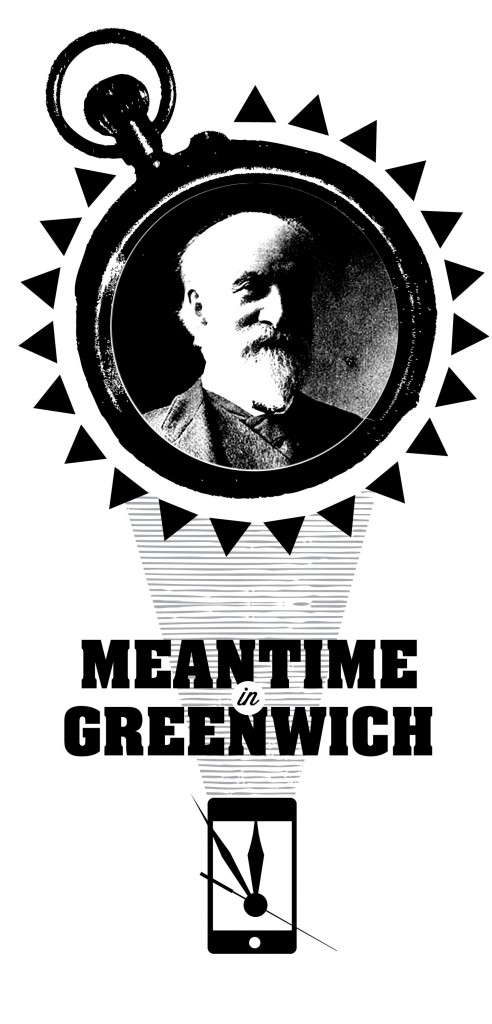Meantime in Greenwich
INDEX
1. CLOCK TIME
2. LOCAL TIME
3. COSMIC TIME
4. TIMETABLE
5. TIME ZONE
6. PRIME TIME
7. MEAN TIME
8. TIME WILL TELL
9. KILLING TIME
10. TIME AFTER TIME
11. TIME AND TIME AGAIN
12. HARD TIME
13. REAL TIME
14. TIME BOMB
15. SHOWTIME
16. TIMES SQUARE
17. NEW YORK TIMES
18. REACTION TIME
19. TIME LIMIT
20. SPACE-TIME
21. TIME WARP
22. IN NO TIME
23. DOWN TIME
24. TIME’S UP


1. CLOCK TIME
Tick Tock
Around the clock
Around the clock we go
Clocking our time
Counting the moments
Second hand emotions
Hour away our days
What are days for?
Days are for keeping the clocks busy.
Idle clock hands are the devil’s work.
In 1876 Sandford Fleming, the Scottish-born engineer who built railroads across Canada, finds himself waiting in a rural train station in Ireland for twelve hours because ‘A.M.’ and ‘P.M.’ have been misprinted in the timetable.
And so Sandford Fleming has time to think and, during this time, he thinks about how difficult it is to schedule trains when every town in the world sets its clock by the sun. For a railway engineer this is a terrible situation. Often train stations need multiple clocks to tell the time in different cities. Mistakes are made. Accidents happen.
While waiting for twelve hours, Sandford Fleming thinks about the sedate life that most people lived before the railroads and how the sun was the only clock we needed. But now people are on the move. Industry demands efficiencies. And after all, the world is now linked together through telegraph. It is time for the mechanical age of the clock to trump the natural time of the sun.
And so it was during this long wait in a rural train station in Ireland that Sandford Fleming resolved himself to undertake what became his most notable achievements in his storied life: the standardization of the time zones around the world.

2. LOCAL TIME
What time is it?
Is there more than one?
Surely, the only time is now.
Here and now
This time?
This time here!
This is where the time is.
You might ask me:
Where did the time go?
And you might ask me:
Where did the time come from?
And I would say:
Time goes around and around
All around you
This is local time
Where the shadows in the world
Are hands on nature’s clock.
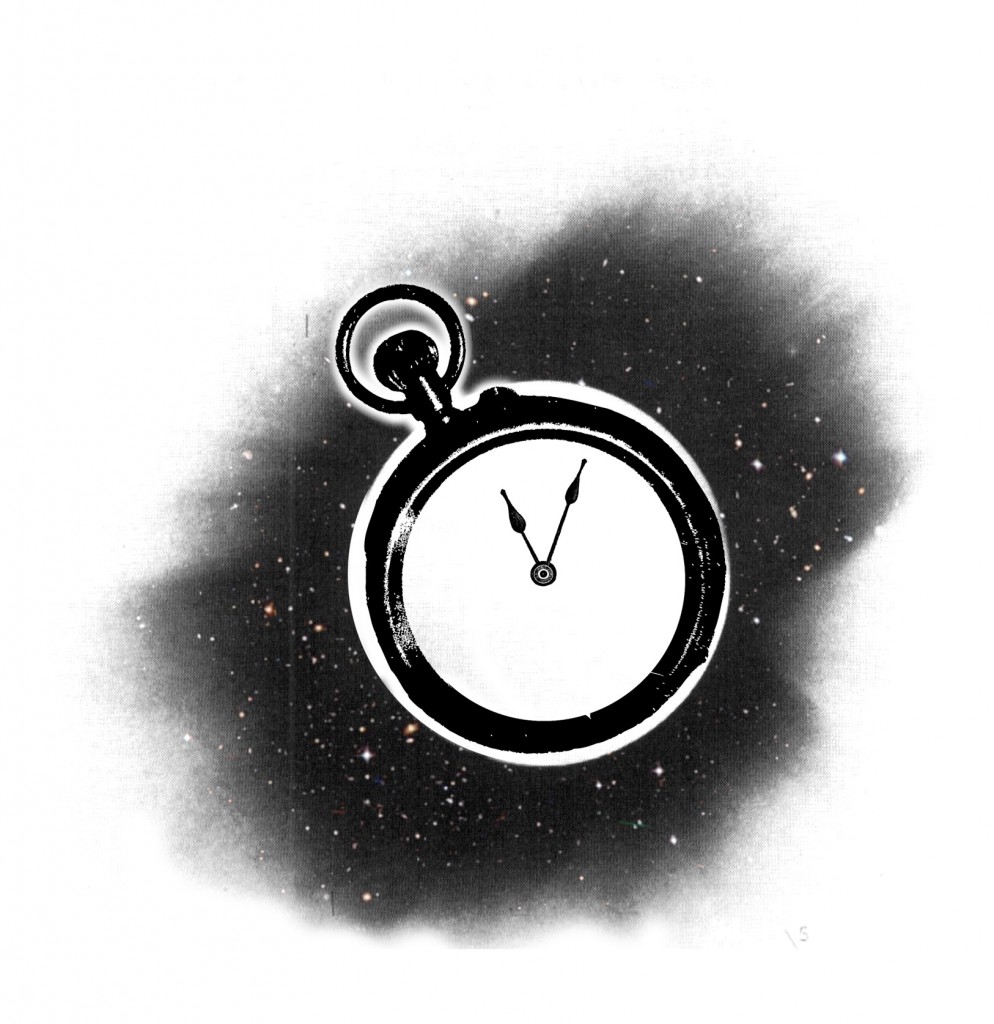
3. COSMIC TIME
Cosmic time is everywhere
All at the same time
Cosmic time is time without end
Where all the time that has happened is equal to all the time that is left.
Cosmic time is a time that is everywhere and nowhere in particular
In Cosmic time, time is outside our world looking in.
Cosmic time is the great referee
The great leveler
It is the time that will keep plodding on even after we’re gone
It is the God of Gods
Kronos
Sandford Fleming wanted the world to count the days with cosmic time and obey a single world clock. Fleming’s cosmic time was of its time. It was the embodiment of the industrial, the rational, the engineered…. It was nature tamed by science’s laws. It was Newtonian in all its’ clockwork glory.
Fleming wanted to rid the world of the nuisance of local time. He wanted the world to be synchronized together through electrical signals that circled the globe.
But just as the world came together to agree to set the clock to cosmic time, cosmology was being turned upside down by a patent clerk in Switzerland. Time, for Albert Einstein, was part of the world. Einstein put the hyphen between space and time and described a world of relativity: where time was relative to space and speed and gravity. He brought time back into the world. And so just as the world became synchronized together by adopting the standard time zones, physics showed us that synchronization itself was impossible.
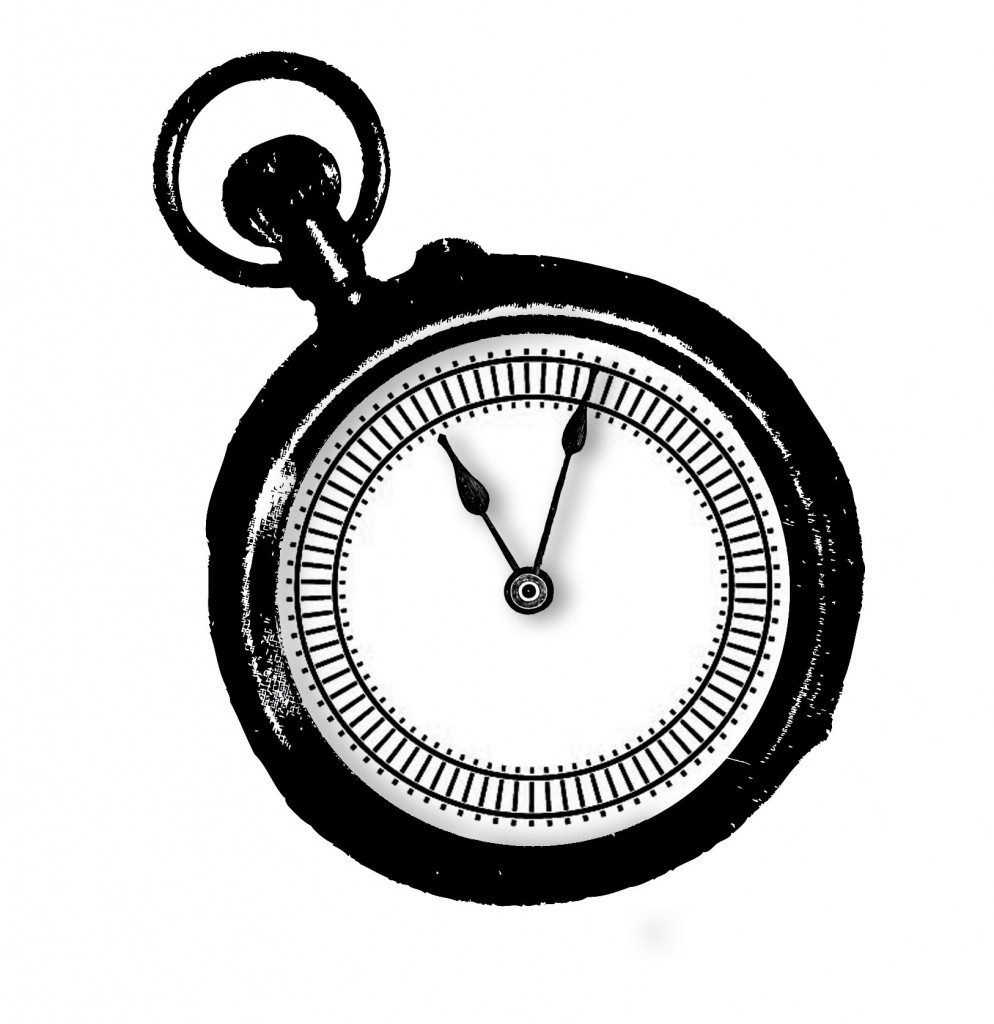
4. TIMETABLE
It was about time…
It was about time that they all sat down at the table and talked about time.
For years they followed the sun, obeying the rhythms of night and day.
And everyone’s time was different. So many different days.
But in the industrial world, with timetables and telegraphs, something had to be done about time.
And so the diplomats and world leaders met in Washington D.C. in 1884 for the World Time Conference engineered by Sandford Fleming. They came for the railroad barons, the frustrated travellers, and the scientific pragmatists fed up with the unwieldy tapestry of time zones that covered the planet. And so the world adopted the 24 standard time zones we know today. It was not; however, without dissent and acrimonious debate. It was with the strenuous objections from the French that the Prime Meridian of this new world system was placed in Greenwich, England.
And so we owe it to the Canadian Sandford Fleming who succeeded in one of the the most difficult engineering challenges of the century; navigating the pitfalls of world diplomacy to create one of the first great international agreement of standards.
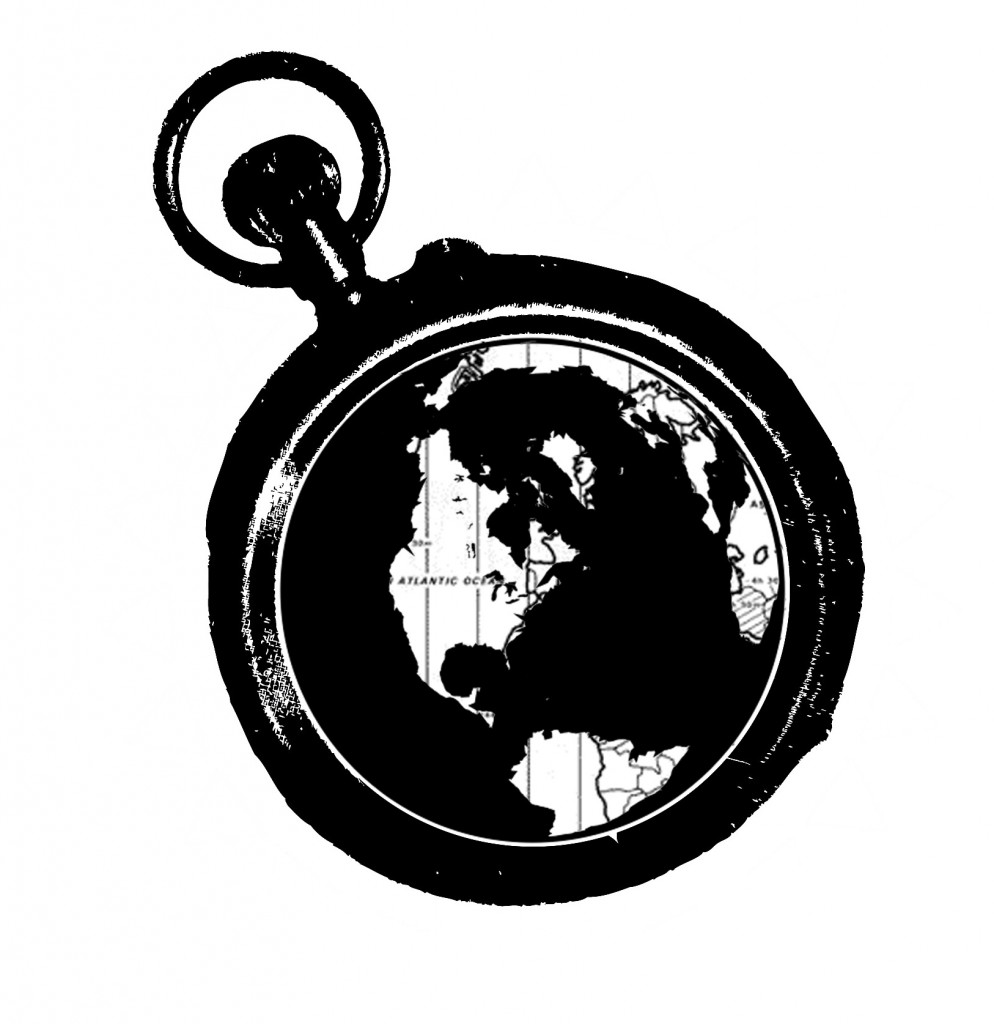
5. TIME ZONE
In classical physics, time and space are like oil and water.
They don’t mix.
Space is just there
tangible and unchanging
But time doesn’t stand still
time moves
It stretches and flows
Liquid time
Intangible
Unretractable
Sandford Fleming gave us the time zones
Parts of the world synchronized together
North and South
Sharing the same time
Sandford Fleming drew a new map of the world and created 24 new countries of time
And now time is in the zone.
Time is zoned out.
Fenced in.
But time is still tricky. The jagged lines of the time zones that are drawn across the earth’s surface at about every 15 degrees of latitude – show how even time has had to negotiate the particularities of geography and political boundaries.

6. PRIME TIME
In 1884 Greenwich is in its prime.
Greenwich is primed and ready to go.
Greenwich is at the centre of an empire where the sun never sets.
Greenwich is ready for Prime Time
The prime meridian could be drawn along any longitude but most of the nautical maps of the world already point towards Greenwich in 1884. And so at the Prime Meridian Conference in Washington D.C., Greenwich became the capitol of time for the world.
It did not go smoothly; however. The French objected to having to set their clocks to English time. And Greenwich even became a target of a bomb attack by a French Anarchist in 1894, becoming the centre of the first International terrorist incident in Modern Britain.
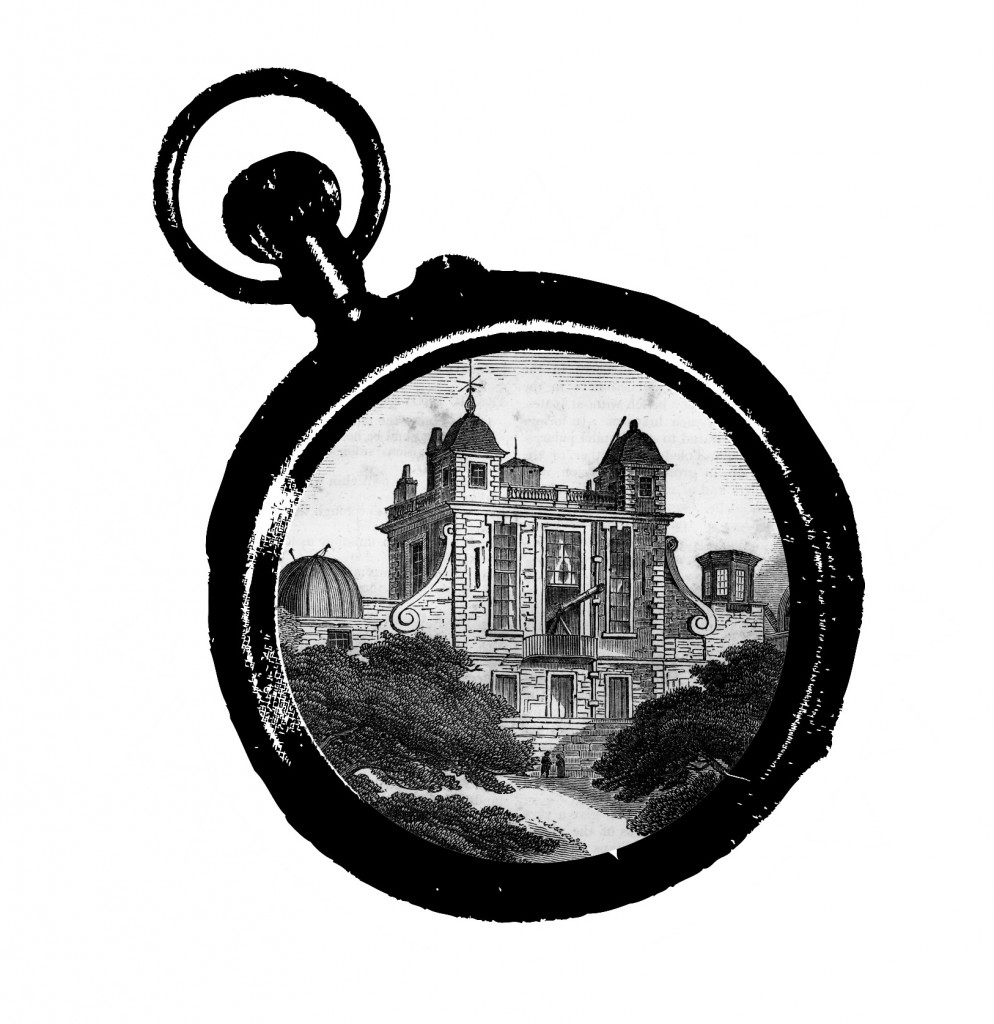
7. MEAN TIME
The gnomon is the pointy bit of the sundial
that creates the shadow and tells the time
But what is it that time is trying to tell us?
The gnomon is telling us solar time
This isn’t clock time. This isn’t mean time
The gnomon is an island
An island of time in a sea of change
Do we even remember the time before this time?
Can you remember real time?
Time is now something that connects us together in an electronic embrace
Nowadays time is the language spoken by machines
In the mean time,
In Greenwich Mean Time
All comes to those who wait
Although time waits for no man
But the gnomon stops at nothing
Casting shadows on our future
Asking is this the end?
Or a means to an end?
And in the meantime,
Time is so mean
Time means our end
Why is time so mean to us?
What did we ever do to it?

8. TIME WILL TELL
You just can’t tell William Tell anything.
You can’t just joke with him and say: “Hey, William Tell, try to shoot this apple off your son’s head” … because he would! That’s the kind of guy he was.
That’s what happened with Zeno the Greek. He came to town making overtures. Saying you don’t have to take it any more. You’ve got to stand up to the man. And pronto, just like that, William Tell was telling it like it was. But it didn’t go down so well. You could tell.
That’s when Bill had step up and do his little trick. Apple on the head. Bill Junior: sweating it.
Zeno was whispering in his ear. He had Bill convinced that even if he shot that arrow at the apple it would never arrive. “Time is an illusion, man!” he said, “Law of diminishing returns”.
But I could see a glint in old Bill’s eye. William’s Tell, I liked to call it. Like the guy who throws knives down at the sideshow, he knew what he was doing.
Some people called William Tell a hero.
Others said he was a terrorist.
I wish we could get our story straight on that one.
Too many arrows of time
Too many apples on children’s heads
Who was that masked man?
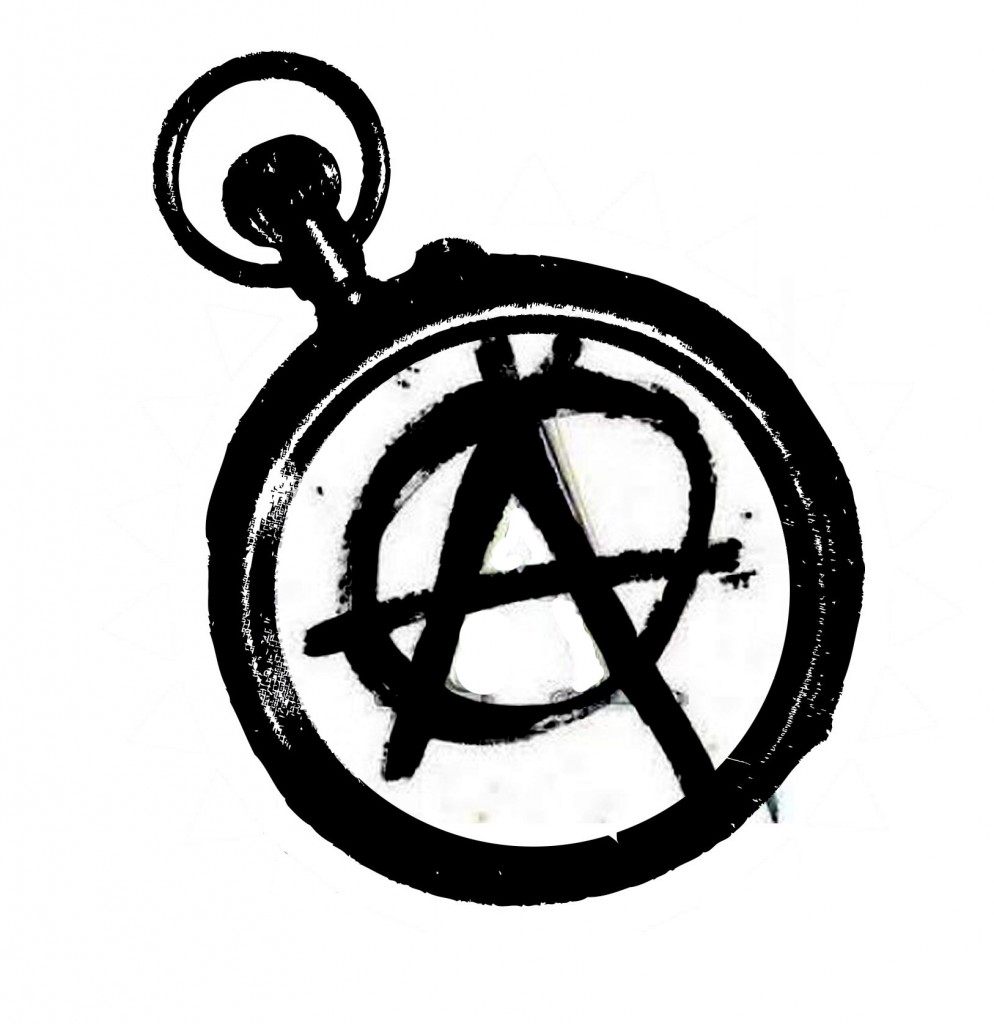
9. KILLING TIME
“Don’t Kill Time, Kill Yourself”, the anarchists say.
It was a French Anarchist, Martin Bourdin who, on February 15, 1894, strode towards the Royal Greenwich Observatory carrying a homemade bomb.
He was just steps away from blowing up the prime meridian…. from killing time. If time wasn’t free then none of us were. He had train tickets to France in his pocket.
But he stumbled. Perhaps nerves got the most of him.
The scientists inside the observatory heard the explosion and rushed to the window just in time to see smoke billowing up over the green parkland of Greenwich Park. On-lookers rushed to the scene to find Bourdin’s broken body somehow still alive. They rushed him to the nearby Seaman’s hospital where he died half and hour later, silent to the end about the message he hoped to speak in the first words in the new language of international terrorism.

10. TIME AFTER TIME
Time after time
We repeat ourselves
And time after time
Things get changed along the way,
In the retelling.
Joseph Conrad’s 1907 novel The Secret Agent: A Simple Tale was based on the events of February 15, 1894 when an anarchist named Martin Bourdin attempted to blow up the Royal Observatory in Greenwich. In the novel Conrad extrapolates from the rather sketchy details to create a ‘simple tale’ of a secret agent named Verloc who works for an unnamed foreign government and undertakes a disruptive anarchist attack in London; “an outrage” against modern standardization and scientific authority. The plot goes terribly wrong when the mentally disabled brother of Verloc’s wife is killed carrying the bomb for Verloc. In the end, Verloc gets his comeuppance as his wife learns about her husband’s involvement in the plot and plunges a fork into his chest.
But then we have this simple tale wagging a rather more complicated dog. Conrad’s story – often cited as the first novel about terrorism in English Literature – becomes a blueprint for other outrages. The novel was found in the hut of the Unabomber – who also targeted scientific establishments in his bombing campaign in the 1980’s. The Unabomber was known to have used the name ‘Conrad’ as a pseudonym and strongly identified with the character of ‘The Professor” who would travel around London with his hand grasping a trigger of a live bomb.
As so the facts and the fictions of violence began their strange dance in the world of modern culture.
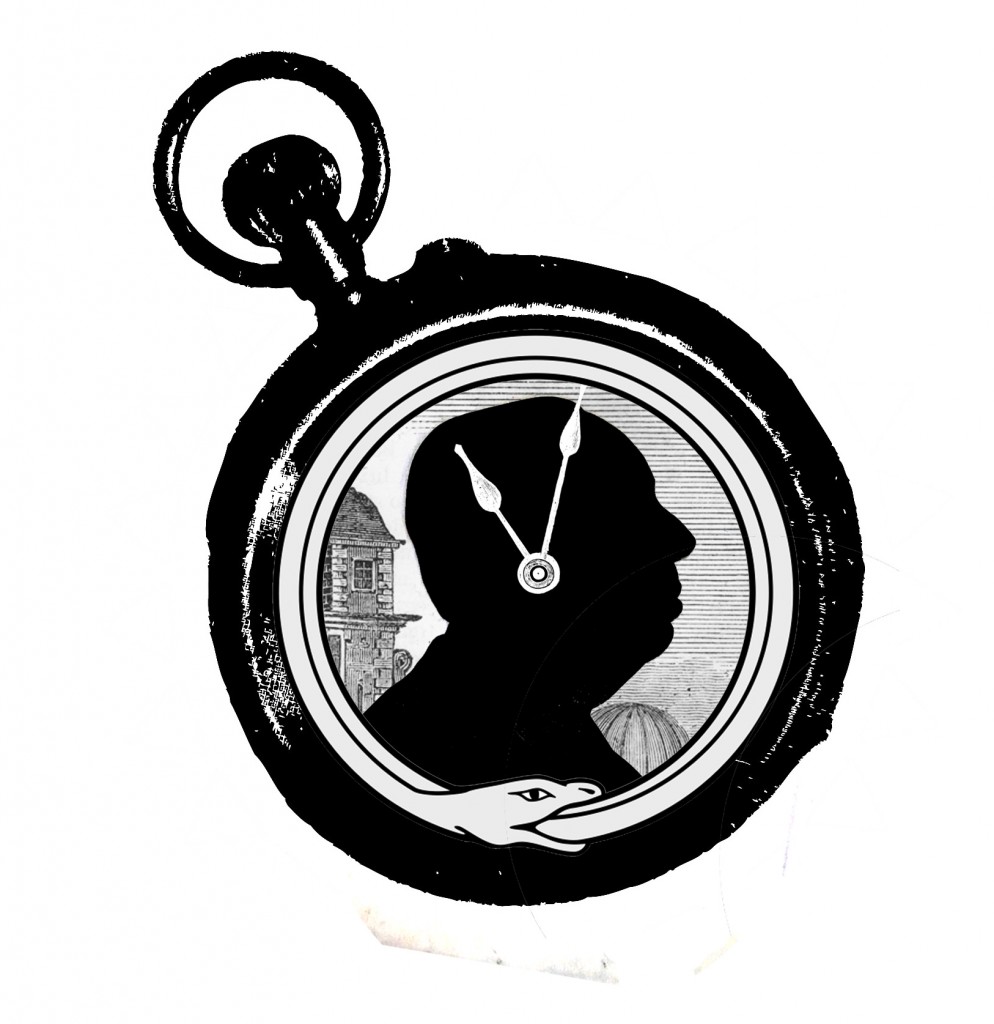
11. TIME AND TIME AGAIN
History repeats itself.
Fact becomes fiction.
Fiction becomes fact.
Time and time again.
And so around and around we go
Revolutions are circular
Around the clock
Again and again
Outrage after outrage.
In 1936 Alfred Hitchcock made a film called Sabotage based on Joseph Conrad’s novel, The Secret Agent, a novel that was based on an actual anarchist attack on the Royal Observatory at Greenwich on February 15, 1894.
Twice removed from the facts, Hitchcock made significant changes to the story. In a nod to his profession, Hitchcock has the secret agent: Verloc, running a cinema to cover his anarchist activities not, as Conrad had it, running a pornographic bookshop. Also, in the climax of the film occurs not at Greenwich, but when the young brother of Verloc’s wife is killed when a time bomb hidden in a film canister explodes on a double decker bus in central London. Hitchcock, the master of suspense, introduces a classic cinematic device; the time bomb, into the equation.
On July 7, 2005 coordinated explosions caused by homemade organic peroxide-based devices packed into rucksacks targeted the London underground and bus system. The now well-known outrages of suicide bombings, choreographed for the most spectacular effect, once again rang out. From the vantage point of a chain of literary references the attacks felt like déjà vu. The explosion on a double-decker bus in Tavistock Square that day had an eerie resemble to the anarchist explosion in Hitchcock’s film.
And around we go again.
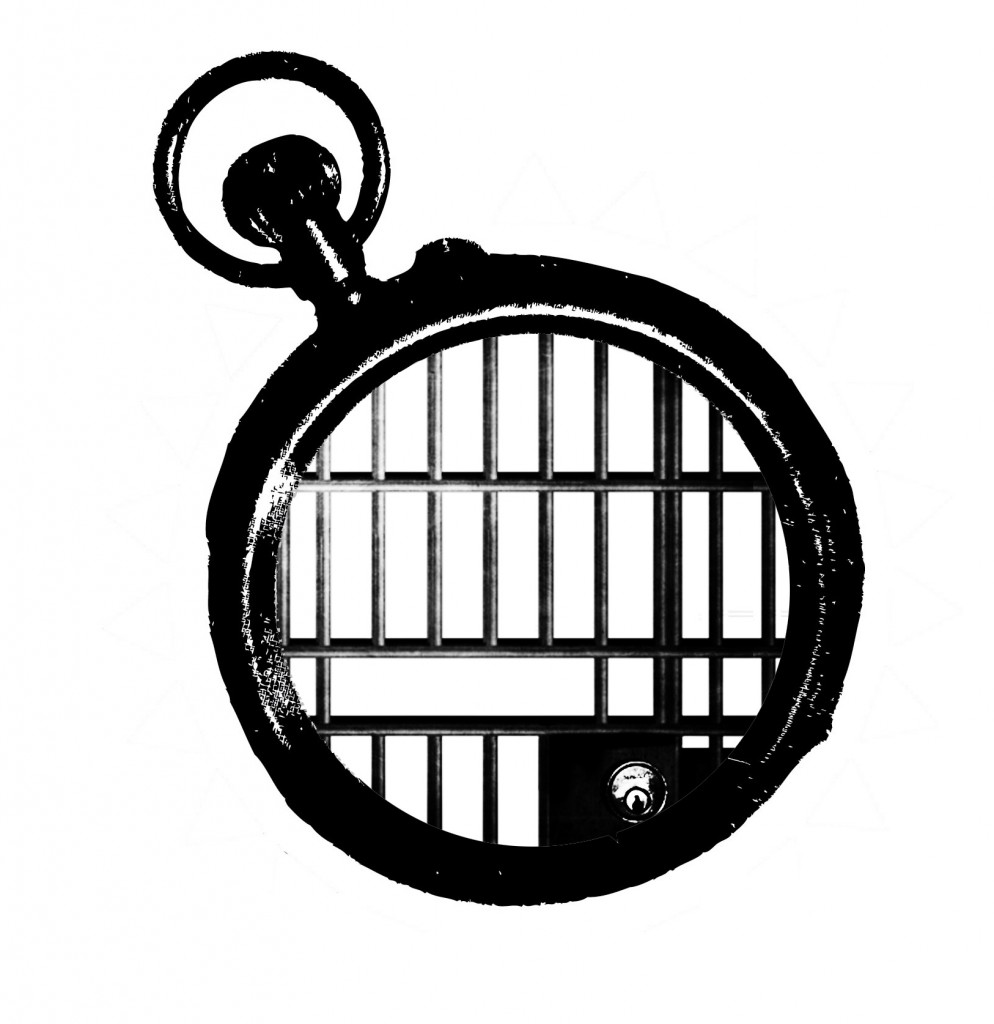
12. HARD TIME
Prisoner number 04475-046 is serving hard time – a life sentence without the possibility of parole in a Supermax facility in Florence, Colorado.
The prisoner had previously spent his time living alone in a cabin in the woods where he would occasionally build bombs and send them to academic institutions, airlines, and technology companies. His career as a bomber spanned nearly 20 years. He killed three people and injured 23 others.
His name is Theodore Kaczynski, more popularly known by the name used by the FBI: the Unabomber.
Kaczynski was a fan of Joseph Conrad’s novel The Secret Agent. He identified with the character of “the Professor”, an anarchist who specialized in explosives. Kaczynski had once been a professor of Mathematics himself in Berkeley California before his hostility and disaffection toward the world caused him to retreat to Montana and become a domestic terrorist.
He used the threat of his continuing bomb attacks to blackmail the New York Times and the Washington Post to publish his anarcho-primitivist manifesto: Industrial Society and Its Future. It was after reading the manifesto that Kaczynski’s brother, David Kaczynski, thought he recognized his brother’s identity and alerted the FBI leading to Kaczynski’s arrest.
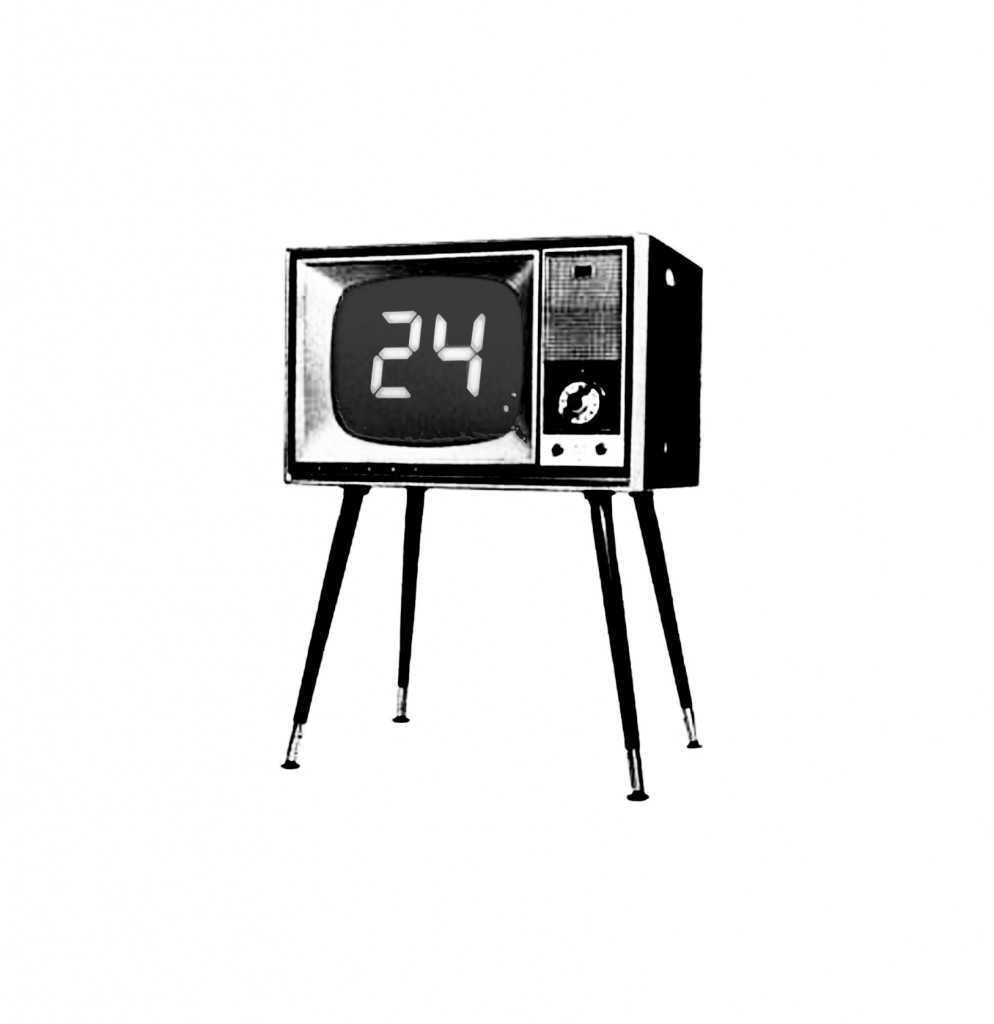
13. REAL TIME
Events occur in real time.
In the mean streets of a paranoid world, Jack Bauer of the Counter Terrorist Unit fights against the clock. Throughout 24 consecutive one-hour episodes that comprises a season of the American television series ‘24’, Jack Bauer selflessly fights to try to prevent a terrorist attack. The urgency of the drama is exacerbated by an image of a digital clock that is regularly introduced into the montage reminding us that cinematic time and our real world time have been synced together, not even to be interrupted by commercials.
‘24’ exploits the classic ‘ticking time bomb’ device to drive the plot forward. ‘24’ writer Virgil Williams says, that the clock is one of the characters of the show. And although the show seems to unfold in real time it also uses the conventional staples of TV structure: rising action, plot arcs, climaxes, and cliffhanger endings each conveniently organized within each episode. The events may occur in real time but real time has been carefully constructed.
The moral dimension of this dark, post 9-11 worldview moves towards the ethical pragmatics suggested by the phrase: ‘the ends justifies the means’. The imperatives of the drama make torture seem justified in the race against the clock.
Although the Canadian-born star, Kiefer Sutherland, has suggested that the show is just a piece of nail-biting drama, it has warped the debate around terrorism. Congressmen in the United States speaking before congressional hearings about the debates of waterboarding and torture have actually asked: “What would Jack Bauer do?”
Once again terror and fiction have been confused. The real world of time and the cinematic world of high drama have become blurred.
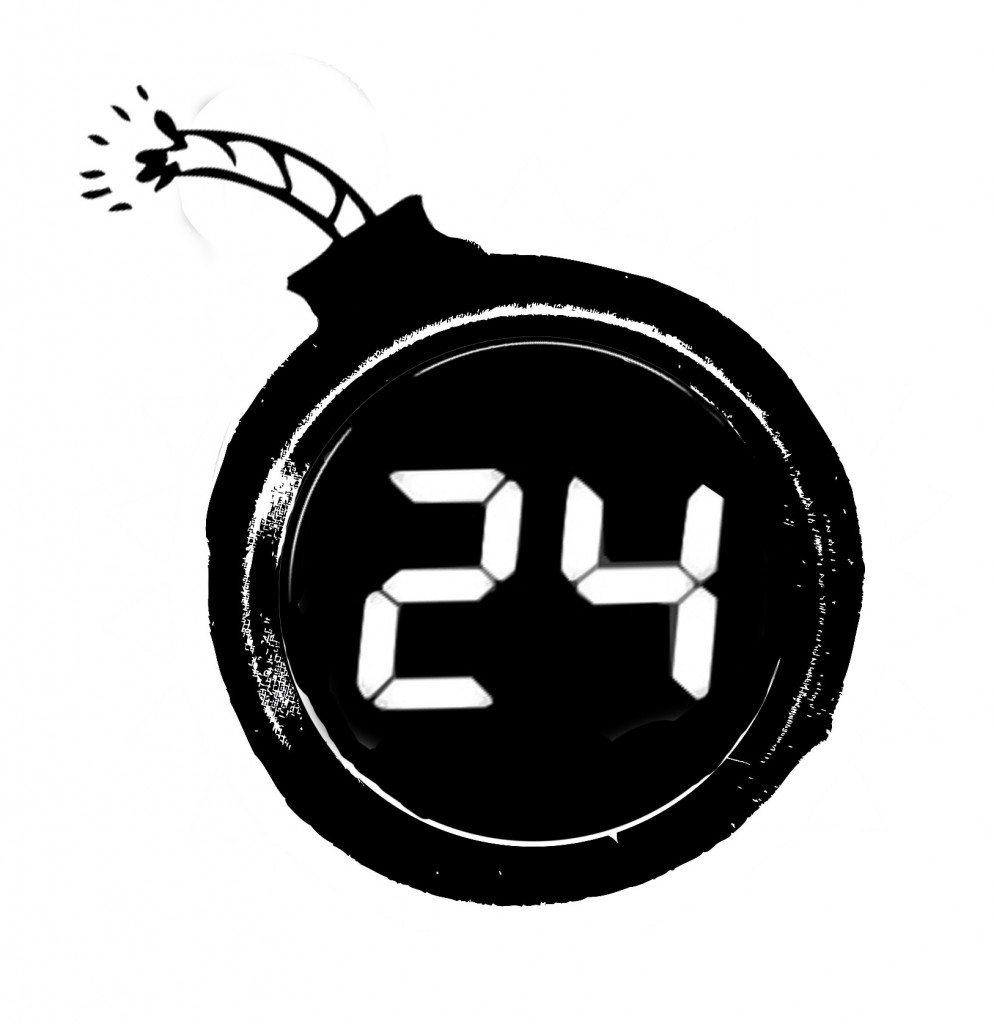
14. TIME BOMB
How many times does the bomb get diffused with just seconds left on the counter?
The Ticking Time Bomb is favorite plot device of the action film – demanding action and reminding us of the tyrannies of mechanical time.
Racing against the clock
Beating the deadline
The ticking time bomb has also become shorthand for the moral and ethical problem: Do the ends justify the means? The problem is usually put something like this: “if a ticking time bomb is set to go off, is it justified to torture someone who might know where the bomb is?” This moral thought experiment has been distorted by its overuse in film. As governments reshape security and privacy in a post 9/11 world, fiction has replaced reality as the magnetic north of the moral compass. Although real life ‘ticking time bomb’ situations almost never exists in the real world, experts like Harvard Professor Alan Dershowtz continue to cite the TV series ‘24’ and the character Jack Bauer at a congressional hearing as a way of endorsing legislation supporting torture.
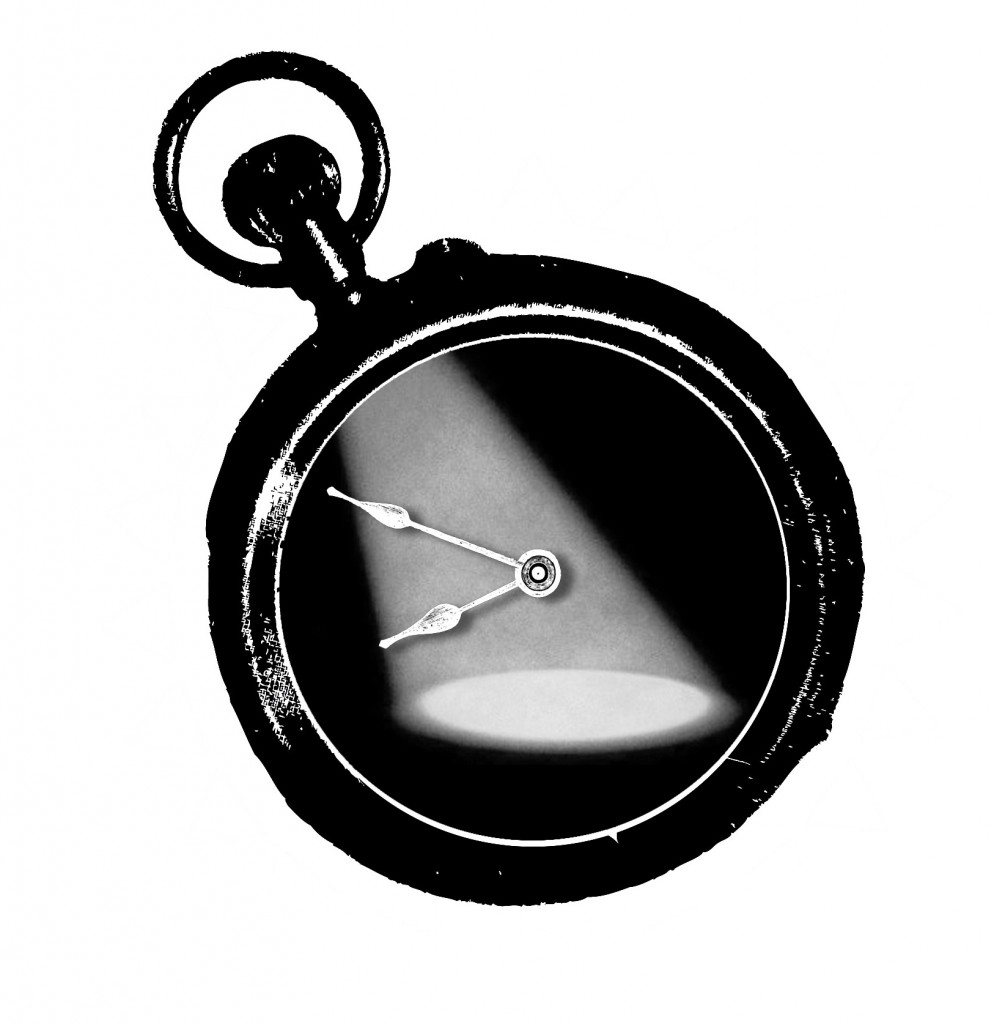
15. SHOW TIME
Ladies and Gentlemen. Please welcome to the ring in this corner wearing purple shorts, a baggy sweater, unkempt head of hair and Groucho mustache, the heavy weight champion of the world of physics, hailing from Ulm, Germany, the discoverer of the laws of relativity and the winner of the Nobel Prize for physics; Albert Einstein.
And in the opposite corner, wearing orange shorts, a stiff starched collar, and a monocle from Paris, France the world renown philosopher; Henri Bergson.
Fighters please come to the centre of the ring. You know the rules: no kicking, no biting, no character assassination, please keep your political opinions to yourself. The first one of you to describe the true nature of time will win this match. Please touch your gloves and begin on the ring of the bell.
Bergson leads with an assertion that time has physical, psychological, and philosophical dimensions. Einstein counters, blocking the philosophical arguments. He is only interested in the physics of time.
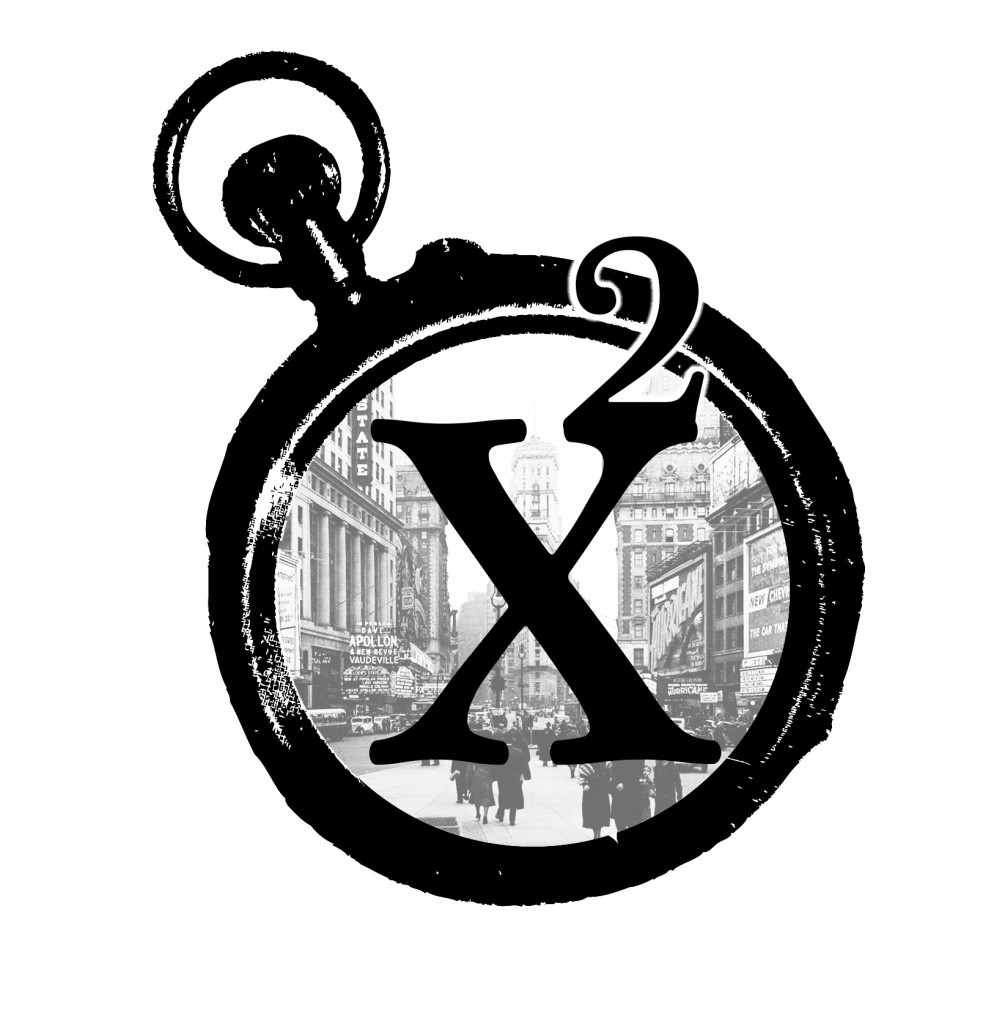
16. TIMES SQUARE
Times Square
What is the square of time?
What is time ‘times’ time?
How many times can time be time?
One time at a time? Double time? Many Times?
Times Square is actually a triangle.
… a triangle of land bought by the New York Times in 1904
This is where time gets squared away.
Every year at midnight on New Year’s Day
The world synchronizes its watches
Watching the Time Ball Drop.
It was 1907 when the first time ball dropped in Times Square.
The time ball is a tradition that dates back to 1833 when ship captains would set their clocks at 1 o’clock each day by watching the time ball drop at the Greenwich Observatory in London. There were time balls around the world. There is even one on the clock tower in Halifax that used to tell time before the cannon.
Times Square
What is the shape of time?
Square time
Time that covers the four corners of the world
Covering the world like a sheet on a military bed
Pulled taut with hospital corners
The earth comfortably wrapped in time.
Unaware of the monster under the bed.
Named Einstein
Einstein who would short sheet time.
Einstein the square who unsquared time and space
E equals MC Squared

17. NEW YORK TIMES
All those Times
All those New York Times
Many times
All those naked stories
In this naked city
Millions of them
One for every broken light on Broadway
Remember that time when two street vendors spotted smoke coming from a vehicle in Times Square and alerted a NYPD Patrolman. They stopped an attempted car bombing. A terrorist attack. The bomb had been ignited, but failed to explode, and it was disarmed before it caused any casualties.
Faster than a New York minute
Good times. Good times
And remember that time that The New York Times saw it fit to print the Unabomber manifesto. To stop him from sending more bombs.
The good times and the bad.
And you know all those times in Times Square when they dropped the ball.
New Year’s Day
You can set your watch by it.
There’s where the world syncs up
A billion people watch that every year.
That’s when New York time is world time
No wonder that New York that doesn’t get enough sleep
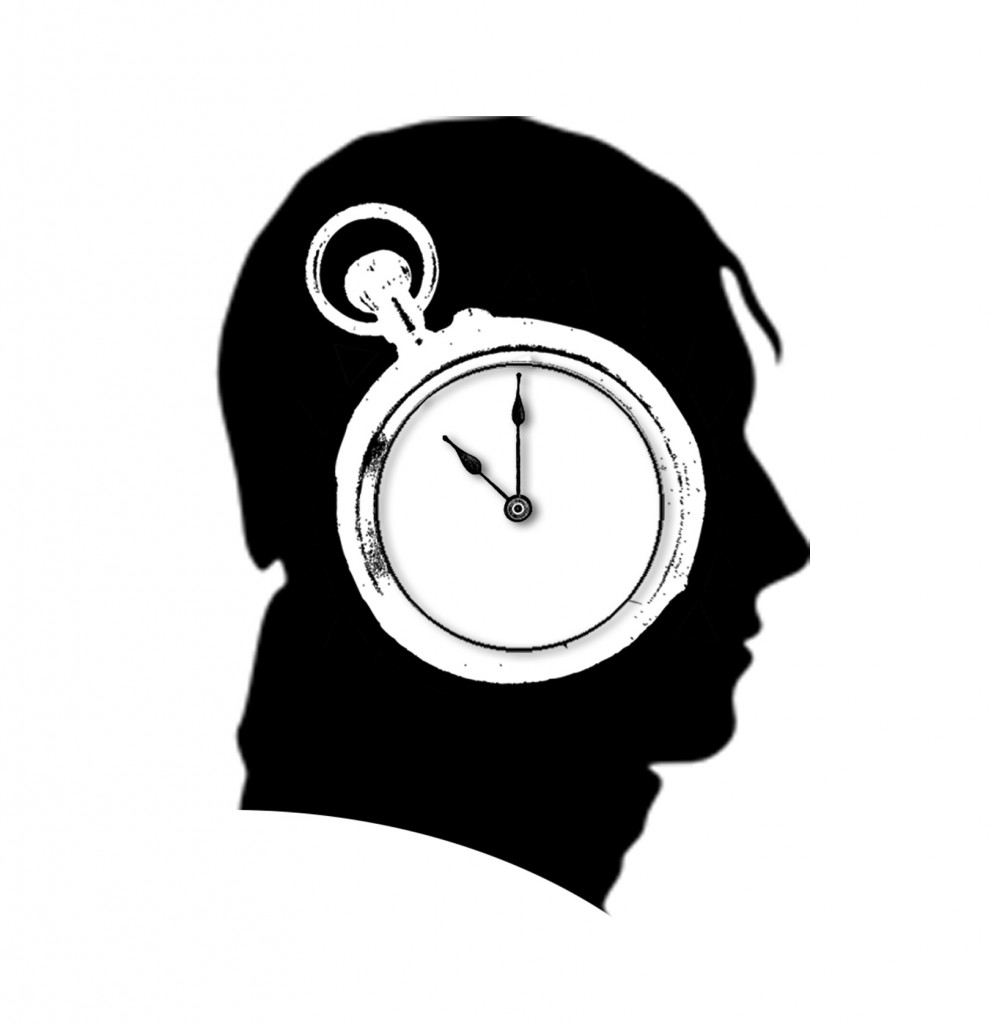
18. REACTION TIME
In 1796 the Royal Astronomer at the Greenwich Royal Observatory, Nevil Maskelyne, fired his assistant, David Kinnebrook, because Kinnebrook’s observations were consistently a tenth of a second different from his own. The implications of a tenth of a second for observations at Greenwich were considerable. When applied to a calculation of the sun’s position in relationship to longitude, for instance, it could result in errors of nearly half a kilometer on Greenwich’s famous nautical maps.
The American Psychologist Edwin Boring pointed out that this was the first time scientists recognized the importance of what is known as the Personal Equation, that is; the understanding that different reaction times yielded different scientific observations. The difficulty of precisely synchronizing the human perceptual apparatus to the observable world would become a persistent problem for scientific enterprises for the next few centuries. It led to the split between objective scientific truth and inner psychological states, and inspired the move towards more verifiable evidence gathered by scientific instruments instead of human observers.
In the strange way that science progresses, it was Albert Einstein, who, in trying to understand the objective existence of time, came up with the revolutionary idea that every person experiences a different physical time depending on their particular relation to gravity and speed. It is an irony that the nascent ideas of Relativity were born in 1796 at the Greenwich Observatory, a name that has become synonymous with the idea of absolute and universal synchronized time.
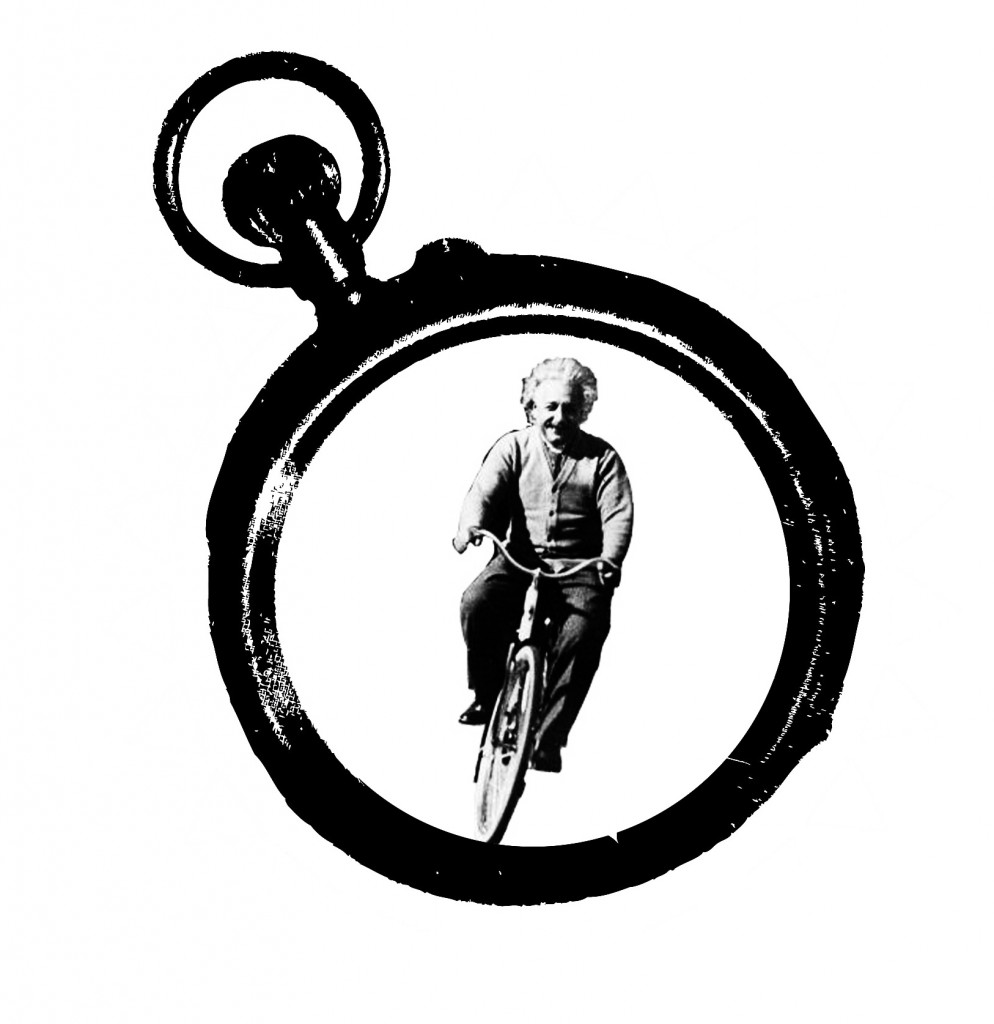
19. TIME LIMIT
Albert Einstein said: “Life is like riding a bicycle; in order to keep your balance, you must keep moving.” And so Albert Einstein rides around on his bike. Around and around he goes. His mad mop of hair bobbing around.
Albert Einstein is a clown. A comedian. He rode circles around Isaac Newton’s clockwork universe that had served physics for generations. Time became relatively malleable in Einstein’s hands. Surrounded by the cuckoo clocks of Zurich, Einstein melted the solid blocks of time with the white-hot flame of theory.
Einstein discovered that nothing could travel faster than the speed of light. This created problems for the clockwork universe. Einstein said the speed of light is 671 million miles per hour and although this is extremely fast, just the fact that light has a speed limit at all presents some tricky problems for physics. Fleming’s world of perfectly synchronized time spreading though out the universe is impossible with Einstein’s idea of relativity.
Space is not the final frontier. The final frontier is time.
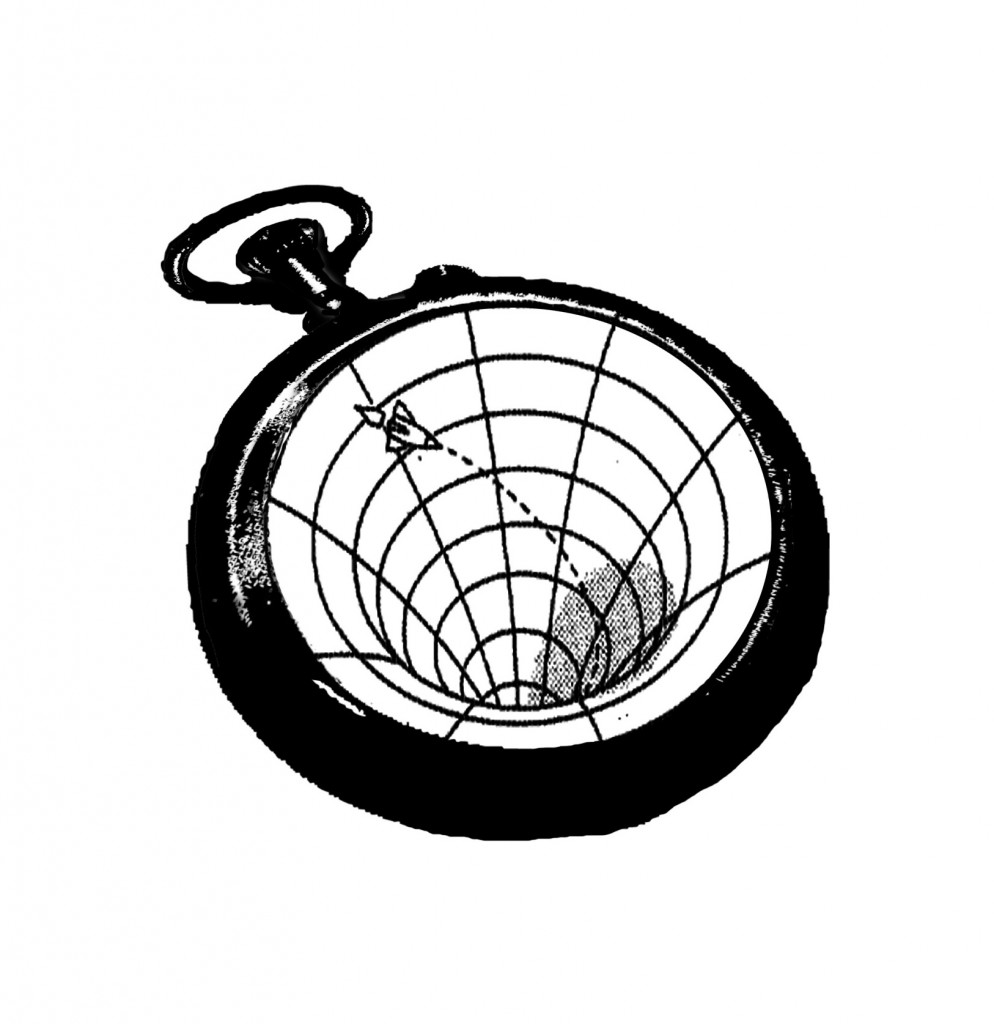
20. SPACE-TIME
Space and time were like oil and water for most classical physicists. They didn’t mix. Space is tangible but time is invisible. For years classic physics assumed that time was a constant; the blank canvas that the physical world was painted on. It was Einstein who proceeded over the marriage of these two solitudes. The vows that physics took with his theory of relativity inserted a hyphen between space and time and the pictures of the world now had to be painted on curved surfaces where gravity warped space and time around it’s cosmic presence.
It was the philosopher Henri Bergson, the French philosopher of time, who spoke up when Einstein asked if there was anyone who had any reasons why these two should not be wed in holy matrimony. For Bergson time was not a physical dimension but a psychological experience. Space and time were incompatible concepts.
Did it work, this marriage of inconvenience? Well if it didn’t GPS won’t work since satellites have to take into account the theory of relativity to stay in orbit.
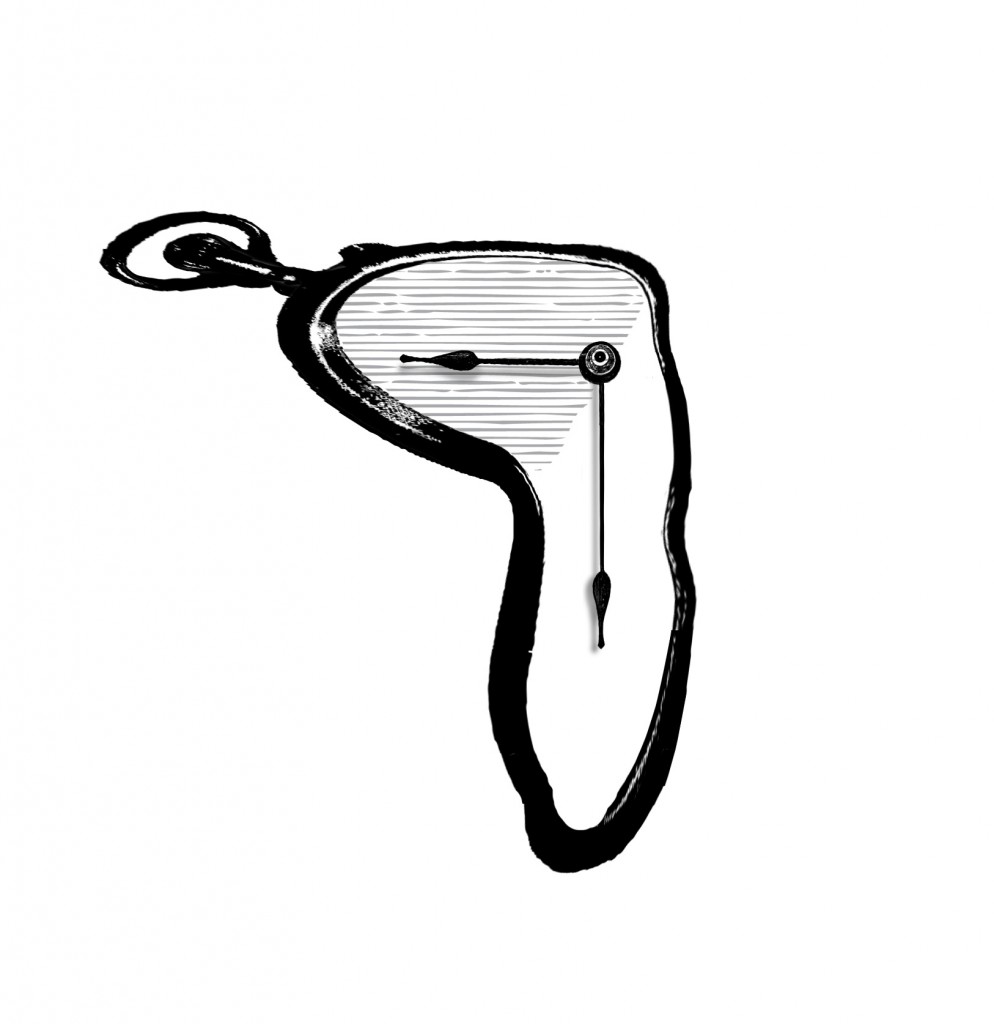
21. TIME WARP
We know that clocks play tricks behind our backs.
If we are having fun the clocks speed up.
As we watch the water boil the clocks slow down
Just to see our reactions
Sure, a clock face is pretty deadpan
But they are laughing at us behind our backs
Time is a landscape carved from experience flowing through the desert of our mind.
Tributaries
Rivers
Flash floods
Soggy marshes of time
Oceans of experience
The mechanical clock knows nothing of these things
It just keeps the drumbeat going
Dali’s painting The Persistence of Memory, painted in 1931 from what Dali called ‘the surrealist perception of a Camembert cheese melting in the sun’ shows his famous soft watches. This is time melting from the heat of memory.
This is the 25th time zone.
The one inside your head.
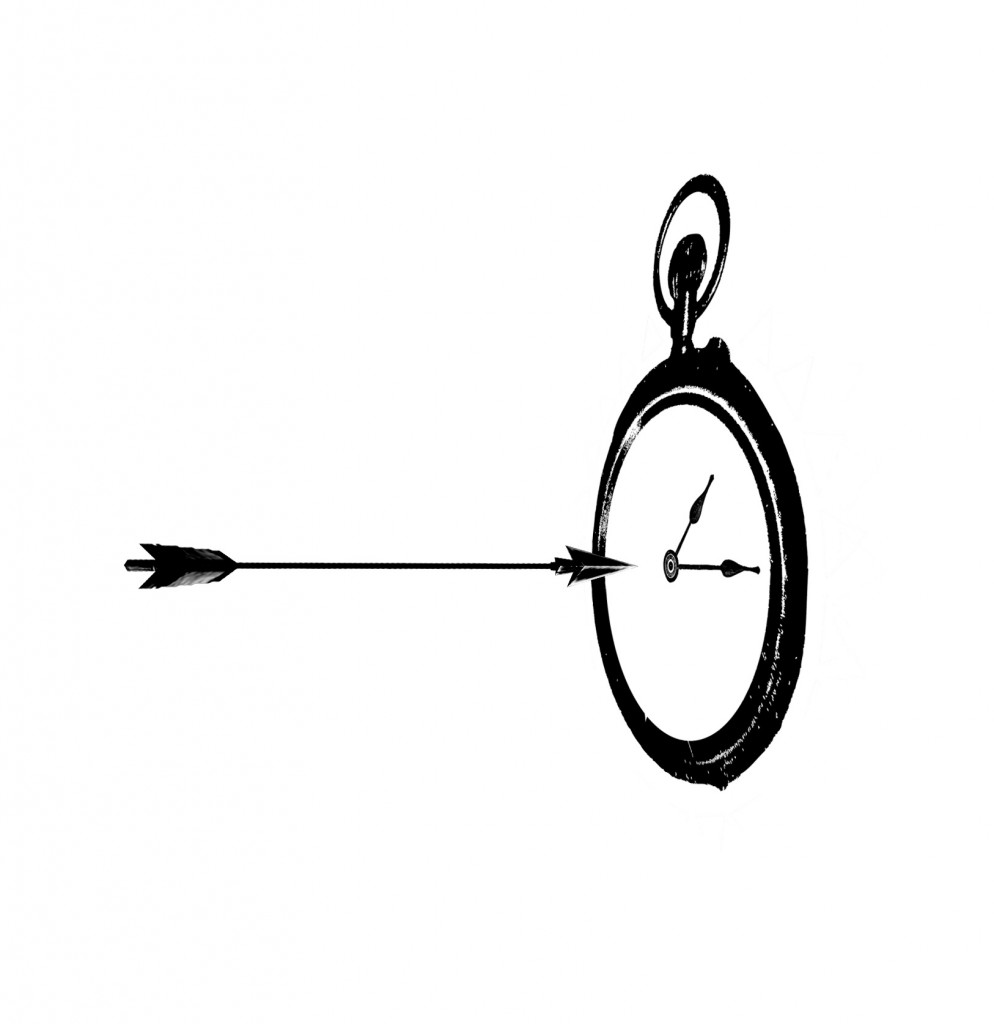
22. IN NO TIME
And sometimes you say. “That will take no time,
No time at all.”
But is there such a thing?
A thing called ‘no time’?
Zeno had us imagine an arrow speeding towards a target. Ever since it left the bowstring the arrow has been moving to a halfway point between where it came from and where it’s going. Even when it reaches that halfway point there is still another mid point for it to get to. No matter how close it gets to the target it has to get to the midpoint first…there is always more ground to cover. So how will it ever get to its destination? It seems ¬¬¬¬¬as if it will always take more time.
There is something reassuring, then, about seeing an arrow flying through the air, cutting through all the mathematical paradoxes that attempt to prevent it from actually getting to its’ destination. It is reassuring because we don’t live in a world of mathematical time. We live with our experience of time.
This arrow of time is not a paradox at all if we imagine that each of us is an arrow. We move toward death but we will never get there. We will never get to the end of our lives because there is always be more life to live. Death is not an experience of life. Our lives will always be about getting towards the next halfway point.
23. DOWN TIME
There was a tree over there
In the forest that fell down
I’m sorry you missed it
It was quite spectacular
The other day a man was here
who was clapping
with just one hand.
That was also quite good.
I wish you could have been here for that.
It’s good to take it all in.
To get away from it all.
From the hustle and bustle of everyday life.
To have a bit of down time
If you had been here last week
you could have seen an angel dancing on the head of a pin.
Such pretty dancing.
I think you would have liked that.
And if you listened very carefully
You could have heard a pin drop.
Into that haystack over there.
If I had time, I would help you find it.
I recently lost a needle in that very haystack.
I really do need to get that needle back.
Heaven knows how I’m ever going to get my camel through the eye of that needle.
But why worry about that now?
It’s time to relax.
Not time to worry.
In a world where time is money
you can spend a lot of time trying to save money
or you can spend a lot of money trying to save time
Does it matter?
Down here, at the bottom of time
It’s about you
Down time is your time.
Down time is quality time.
Leisure time.
Me time.
Down time is when you are off the clock.
This is when you can get down
Not down for the count
Not counting the seconds
No second thoughts
Because this is want really counts
Putting up your feet
And taking time off
Down time.

24. TIME’S UP
Time’s up
Up, up in the sky
It’s a bird.
It’s a plane.
It’s a satellite, …circling the globe at twelve and a half thousand miles an hour.
Just one of 24 satellites synchronized together to create a Global Positioning System that can pin point your position anywhere on the surface of the planet.
GPS makes space the slave of time.
GPS continues Sandford Fleming’s work of synchronizing the clocks.
But the dance of time and space, as choreographed by Albert Einstein, requires that the satellite’s clocks are adjusted by seven millionths of a second every day to account for the effects of relativity. Without that, it would only take two minutes for the whole system to go out of sync.
David Clark is a media artist, filmmaker, and writer interested in experimental narrative and cinematic use of the internet. He has produced work for the internet, narrative films, gallery installations, and public art commissions. Recent works include interactive narrative works for the web: “88 Constellations for Wittgenstein,” “Sign After the X,” and “A is for Apple” as well as “Meantime in Greenwich,” an augmented reality public art commission. His work has been exhibited at festivals, museums and galleries around the world including Sundance Film Festival, SIGGRAPH, European Media Arts Festival, Transmediale, the 2012 Winter Olympics, and the Museum of Moving Images in New York. His work has won First Prize at FILE2002, Sao Paulo and the ‘Best in Show’ at the 2003 SXSW Interactive Festival in Austin, Texas. “88 Constellations for Wittgenstein” was included in the Electronic Literature Collection #2, and won the 2012 $25,000 Lieutenant Governor of Nova Scotia Masterworks Award. He is the Chair of Media Arts at NSCAD University in Halifax. His work can be seen at www.chemicalpictures.net.
